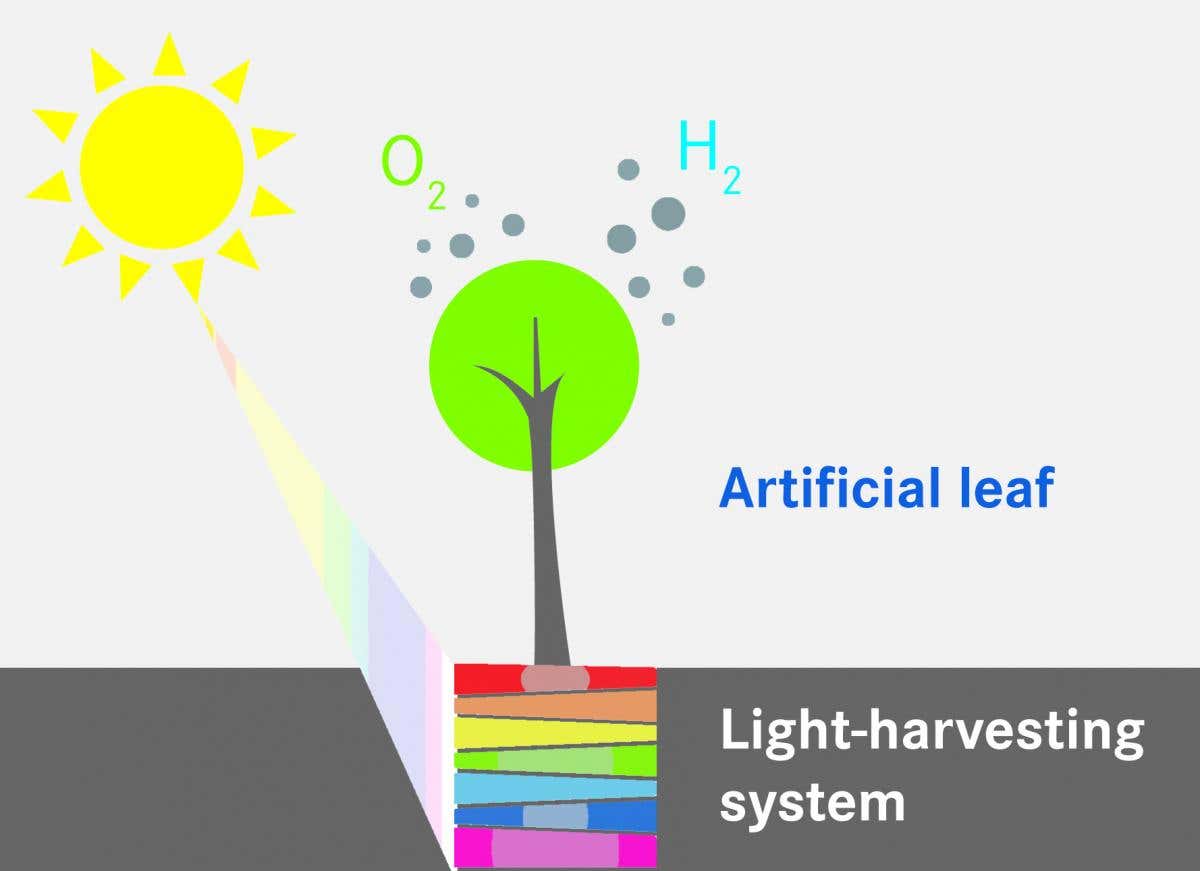Capturing fuel from the sun
Artificial leaves and soap bubbles could unleash a new era of “solar fuels” to address increasing energy demand and climate change.

[July 30, 2021: iCube Programme]
Artificial leaves and soap bubbles could unleash a new era of "solar fuels" to address increasing energy demand and climate change.
Photosynthesis is one of the most important biochemical process on the planet. Just using sunlight, plants and algae transform water and carbon dioxide into the energy they need to grow, reproduce, and keep on living while providing the oxygen and carbohydrates necessary to support countless other lifeforms. Yet, mimicking this seemingly simple process in order to harness the largely untapped energy potential of the sun is one of the major technological challenges scientists around the world are facing nowadays.
You may ask what the point is of researching artificial photosynthesis, when plants already do such a fantastic job? The reason is we need fuel for modern transport, for industry, for heating and for countless other commodities we take for granted now. Solar cells already let us convert sunlight into electricity, however storing electricity in vast amounts is challenging. Hence, today we still rely on coal, oil and gas and fine chemicals due to their high energy density.
Today's fuels mostly come from fossil reservoirs, whose retrieval and use have a deleterious impact on the environment. Their combustion is causing emissions of large amounts of greenhouse gases (GHGs) into the atmosphere, provoking global warming and changing the climate. But what if there was a cleaner way to generate the fuels needed for modern living? Two projects: A-LEAF and SoFiA, funded by the EU's Horizon 2020 programme, are exploring this possibility.
A-LEAF is a FET Proactive/EIC Pathfinder project with a multidisciplinary consortium led by the Institute of Chemical Research of Catalonia (ICIQ). It brings together materials chemistry, computational chemistry, surface physics, engineering and state-of-the-art characterisation techniques. It manages an artificial photosynthesis platform for the capture and transformation of solar energy into chemical energy. The objective is to directly turn water and CO2, through the action of sunlight, into oxygen and organic matter (e.g. methanol, methane).
Based on a photo-electro-catalytic (PEC) cell – a.k.a. an "artificial leaf" – the organic products will then be used as fuel, extracting their stored energy from their recombination with oxygen back to the original feedstock (water and CO2) in an environmentally neutral closed-cycle.
SoFiA is a FET Open/EIC Pathfinder project, led by Uppsala University. It brings together disciplines such as surfactant science, renewable energy and fundamental science of water at nanoscale, supported by micro-systems engineering, to produce renewable solar fuel by artificial photosynthesis. Instead of photo-electro-catalytic cells as used in A-LEAF, the technology proposed by the SoFiA project uses soap bubbles filled with CO2. Their surface (the film membrane) acts as a catalyst for the chemical reaction between the sunlight and the CO2 that the bubble contains inside, converting the CO2 into fuel.
The potential of artificial photosynthesis using relatively cheap components to transform a primary greenhouse gas such as CO2, into an energy dense fuel is a very exciting prospect for the scientific community and society at large. It would greatly support EU ambitions for climate neutrality as highlighted in the European Green Deal.
For more green news stories check out our Green Impact section at The Brighter Side of News.
Like these kind of feel good stories? Get the Brighter Side of News' newsletter.
Tags: #New_Innovations, #Green_News, #Clean_Energy, #Research, #The_Brighter_Side_of_News
Joseph Shavit
Head Science News Writer | Communicating Innovation & Discovery
Based in Los Angeles, Joseph Shavit is an accomplished science journalist, head science news writer and co-founder at The Brighter Side of News, where he translates cutting-edge discoveries into compelling stories for a broad audience. With a strong background spanning science, business, product management, media leadership, and entrepreneurship, Joseph brings a unique perspective to science communication. His expertise allows him to uncover the intersection of technological advancements and market potential, shedding light on how groundbreaking research evolves into transformative products and industries.



